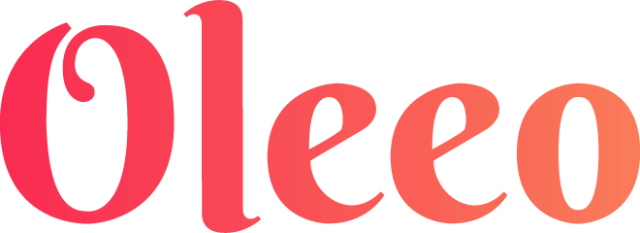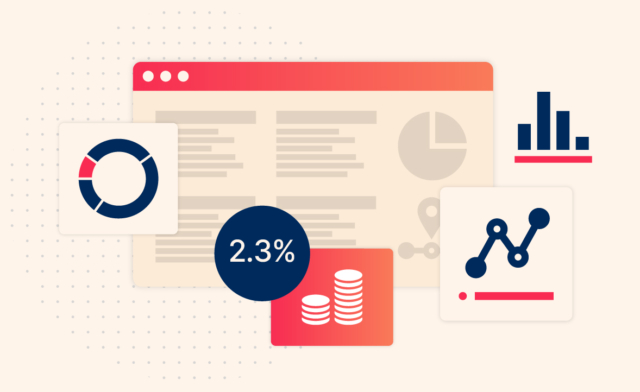What is an Applicant Tracking System (ATS)? Everything You Need to Know in a 2025 Guide

Why should businesses invest in an applicant tracking system (ATS)? Well, today, especially after the disruptions of the pandemic and the Great Resignation, Recruitment is more crucial than ever. With younger generations entering the workforce, candidates now have higher expectations, seeking companies that value diversity, inclusivity, and technological advancement.
Skilled professionals have endless opportunities, making it essential for businesses to streamline their hiring process. That’s where an ATS comes in. In fact, in 2024, 98.4% of Fortune 500 companies relied on it.
Let’s dive into what applicant tracking systems are and how they can transform your hiring strategy.
What Is an ATS?
Applicant tracking systems help your hiring team filter and organize potential candidates for a job opening in your company. So, what is an ATS software? This provides a central platform for your team to view and filter candidates based on job requirements. It also helps to track their progress through your hiring process.
Businesses have been using applicant tracking systems since their invention in the 1990s. Before applicant tracking systems were introduced to HR departments, those tasked with hiring new employees kept resumes in filing cabinets or piled high in a mess on their desks. Applicant tracking systems streamlined the whole process.
Over the years, the technology has evolved to meet growing business demands. The Incorporation Of AI — artificial intelligence — has helped recruiters improve their time-to-hire and quality-of-hire. Applicant tracking systems now offer features that are highly valued during the ATS Selection process, such as:
- Single-click postings to multiple job boards and social media platforms
- Automated email templates for candidate communication
- Detailed analytics on your hiring process
- A branded careers page for your company website to improve candidate attraction
- ATS integration with other business software such as HRMS, CRM, and VMS
- Google app integration
- Candidate research and background checks
- Automated resume screening
- Scheduling features
- Aggregate databases of applicants
How Does an Applicant Tracking System Work?
An ATS essentially emulates a human mind. Embracing the automation of applicant tracking systems streamlines some of the more time-consuming screening and organizational steps of your hiring process. Your hiring staff will be able to know at a glance if a given candidate is on the first or second interview. It will also archive an eliminated candidate for future positions in your company. Let’s examine how it works:
- Resume Parsing: When candidates apply for a job, their resumes are uploaded to the applicant tracking system. The ATS system Recruitment Technology then parses or extracts relevant information from the resumes, such as contact details, work experience, education, skills, and keywords.
- Candidate Screening: The applicant tracking system automatically screens and filters candidates based on predefined criteria set by the recruiter or hiring manager. This may include qualifications, experience, skills, location, etc.
- Job Posting and Distribution: The ATS allows recruiters to create job postings and distribute them across multiple job boards, career websites, social media platforms, and internal networks. This helps attract a larger pool of candidates.
- Applicant Interaction: The applicant tracking system makes communication easy between recruiters and candidates through email templates, automated messages, and scheduling tools. Recruiters can send personalized messages, schedule interviews, and provide updates to candidates directly through the system.
- Candidate Management: The ATS provides a centralized database or dashboard where recruiters can view, organize, and manage candidate profiles and applications. They can track the status of candidates, move them through different stages of the hiring process, and collaborate with team members.
- Interview Coordination: ATS systems often include interview scheduling tools that allow recruiters to coordinate interview dates and times with candidates and hiring managers. This helps streamline the scheduling process and avoid conflicts.
- Insights and Analytics: Applicant tracking system platforms offer reporting and analytics features that provide insights into recruitment metrics, such as time-to-fill, source effectiveness, candidate conversion rates, and Diversity metrics. This data helps recruiters evaluate and improve their hiring strategies.
Benefits of Using an Applicant Tracking System For Recruiters, Employers, and Candidates

Like many user software programs, the benefits of an applicant tracking system are unique to the needs of each user. However, there are quite some universal Applicant Tracking System Benefits that recruitment and hiring professionals enjoy..
1. ATS narrows down your potential candidates to the right candidates
Beginning the filtering process of candidates is a daunting prospect. Before ATS, recruitment staff would spend countless hours scanning resumes or application forms, looking for any indication that a potential employee is worth a closer look.
However, using ATS streamlines this process by implementing the keywords that you’re looking for. It also helps to eliminate candidates who have red flags on their resumes. This ensures that when your hiring staff first looks at a candidate, they’re looking at someone who is more likely to be the right candidate.
Knocking out this initial step saves your company hours of monotonous work. You save money, and with High Volume Hiring happening more frequently now, this time and money can seriously add up.
2. Applicant tracking systems allow for a better overview of candidates
There is no shortage of websites on which you can post your job listing. Keeping track of applicants through each website is a waste of time, and candidates are bound to slip through the cracks with all the chaos of shifting from site to site.
Using an ATS allows your recruitment team to switch between job posting applications easily, compare multiple candidates, change their application status, and more, all without leaving the ATS program. Once again, this will save your hiring team untold headaches and save your company money in the form of average time spent on the hiring process.
3. ATS reduces your cost-per-hire and time-per-hire
Fortune 500 companies got where they are by being smart and innovative. No wonder over 90% of them use an applicant tracking system. Here are some statistics that back up why you should be using an ATS.
94% Of Recruiters agree that their ATS has had a positive impact on their organization’s hiring processes. Recent studies also indicate that an effective ATS can decrease the average hiring cycle by as much as 60%. And more than 86% of recruiters agree that their ATS has reduced their overall time-to-hire.
Fortune 500 companies who use an applicant tracking system have seen their average cost-per-hire dropping to between $150 and $300. That’s a saving of around $1,500 per candidate. Factor this in with high-volume hiring, and you’ve got a vast difference in how much it could cost you to staff your business fully.
4. Applicant tracking systems helps make your company more diverse and inclusive

Diversity and inclusion have moved to the forefront of nearly every market in the world, and that trend is expected to continue. Creating a diverse and inclusive company provides your company with exponential benefits. Companies with a diverse workforce benefit greatly from the diversity of ideas.
Using tools such as intelligent writing, intelligent selecting, and intelligent assessment scoring helps reduce bias in your hiring process and Embrace Diversity In Your Workplace. The world is evolving in the 21st century, and companies that recognize and evolve with the trends of the future are the ones that will succeed and last.
5. ATS decreases your time-to-hire
With all the competition for good employees it’s important that you stay competitive by moving good applicants from initial application to hired employee as fast as possible. Companies with a slow time-to-hire risk good candidates accepting positions at other companies.
By organizing all of your candidates in one program, it makes it easier for you and your hiring staff to review, rate, and narrow down potential candidates. Streamlining this process will save you and your potential candidate precious time.
6. Applicant tracking systems improves candidate experience
Websites like GlassDoor prove that applicants talk to each other. Just because a given candidate isn’t hired doesn’t mean that they can’t have an impact on your business. Having a streamlined hiring process with excellent communication makes a candidate feel valued.
A candidate who feels valued will not only have positive things to say about your company — inspiring other candidates to apply — it also maintain a good relationship with that candidate. This increases the likelihood that a candidate will re-apply to your company if a more suitable role becomes available.
Key Features of the Best Applicant Tracking Systems
Time to explore the core functionalities that make an ATS indispensable for modern HR teams, enabling them to efficiently source, screen, and hire the best candidates for their organizations.
- Candidate Profile Extraction: The ability to automatically extract and parse relevant information from resumes, such as contact details, work experience, education, skills, and keywords.
- Applicant Screening and Filtering: Tools to screen and filter candidates based on predefined criteria, such as qualifications, experience, skills, location, and other factors.
- Job Advertisement and Sharing: Functionality to create job postings and distribute them across multiple job boards, career websites, social media platforms, and internal networks.
- Candidate Communication: Tools for communication between recruiters and candidates, including email templates, automated messages, and scheduling tools for interviews and follow-ups.
- Applicant Management: A centralized database or dashboard to view, organize, and manage candidate profiles and applications, track candidate status, and move candidates through different stages of the hiring process.
- Interview Scheduling: Features for coordinating interview dates and times with candidates and hiring managers, streamlining the scheduling process, and avoiding conflicts.
- Reporting and Analytics: Reporting and analytics capabilities to track and analyze recruitment metrics, such as time-to-fill, source effectiveness, candidate conversion rates, and diversity metrics.
- Collaboration and Workflow Management: Tools for collaboration among recruiters and hiring managers, allowing them to share feedback, collaborate on candidate evaluations, and track progress through the hiring pipeline.
- Compliance and Equal Opportunity: Features to ensure compliance with legal requirements and equal opportunity regulations, such as tracking EEOC data, managing documentation, and providing audit trails.
- Customization and Integration: Options to customize the ATS to fit the organization’s specific needs and workflows, as well as integration capabilities with other HR systems, such as HRIS, payroll, and onboarding platforms.
Types of ATS
Applicant tracking systems can be categorized into different types based on their functionality and target users. Here are the main types of ATS in a user-friendly table.
| Type of ATS | Function |
|---|---|
| Basic ATS | Entry-level ATS solutions that offer essential features such as job posting, resume parsing, and basic candidate management. Suitable ATS for small businesses or startups with simpler hiring needs. |
| Enterprise ATS | Designed for large organizations with complex hiring processes and high volumes of applicants. Offers advanced features such as customizable workflows, integration with other HR systems, and analytics and reporting capabilities. |
| Industry-Specific ATS | Some ATS solutions are tailored to specific industries or sectors, such as healthcare, retail, or hospitality. These often come with features and functionalities tailored to the unique hiring requirements of those industries. |
| Recruitment CRM | Recruitment Customer Relationship Management (CRM) systems combine ATS functionality with customer relationship management features. Designed to manage candidate relationships throughout the entire recruitment lifecycle, from sourcing and initial contact to hire. |
| Open-Source ATS | Provide customizable and flexible platforms that allow organizations to build and customize their own ATS according to their specific needs. Often favored by organizations with unique or specialized hiring requirements. |
| Mobile ATS | Optimized for mobile devices, allowing recruiters and hiring managers to manage the recruitment process on the go. Usually offer mobile-friendly interfaces and features such as mobile job applications and candidate communication. |



